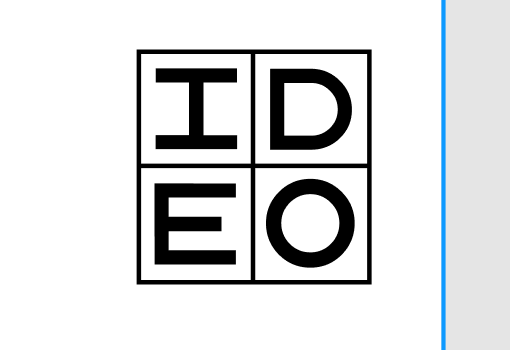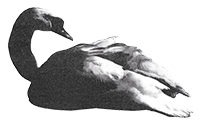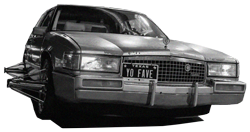Thomas Overthun is standing in the epicenter of a whirlwind of change, packing up a house he has lived in for 20 years while his son flies a drone around him. Decades of products that have made their way from sketches to physical form are neatly bubble-wrapped in boxes beside the bed where his son was born. For him, it’s a moment of reflection: looking back on 30 years of his work at IDEO, celebrating all the objects that have come to life along the way.
Since 1993, when he joined the company from Philips, he has helped bring dozens of products into the world. His body of work spans everything from toothbrushes to mattresses, a helmet, a barbecue grill, a bike saddle and bag, makeup, packaging for cookies and water, exercise equipment, medical devices, headsets, eyewear, kitchen tools, rooms, lamps, and even a dancing, scent-diffusing robot. “If you have that many children, it's hard to have a single favorite,” he says. “It’s a tired metaphor. But still, I think there are categories of love.”
He lights up when he talks about a pepper grinder he designed; the moment a client saw a first prototype; the pride in the people and objects he has guided and counseled; and the respect he reserves for certain designers and the movements they inspired. But even after 30 years, he’s not big on the idea of the concept of legacy. He’s never written a Rams-style manifesto, but he remains a purist. “There's a thing about design where you make a little tiny mark, a little tiny scratch on the world by making something—a potato peeler, a pepper grinder, a toothbrush,” he says. “And it is weirdly doubly satisfying. The feeling of ‘I made that,’ and I can show it to my son.”
Make it Dance
The dancing robot, called Piro, was born out of a long creative friendship with the folks at Moooi, a creative luxury products brand based out of the Netherlands. “Over years of hanging out with each other here and there, we all of a sudden said—let's just send them 20 ideas.” One of them was the robot. “Something that has a personality. Sort of like a cat, it lives its own life. Occasionally, it is ready to love you and then it'll retreat again.”
Overthun hashed out this creative collaboration with renowned product designer Marcel Wanders through prototype demos and candid feedback sessions over lunches in Italy. Wanders would encourage the IDEO team to lean into their superpower, which wasn't just working with technology, but “seeing that technology through the eyes of Moooi”—giving it a beauty and autonomy of its own.
“It was this idea that there is an inherent beauty in this industrial robot and how it moves. And we find it cute, endearing, elegant, impressive. Of course, it's just wires and metal and motors.” But add sensory dimensions like scent, and it’s something more. “It sets a mood that's kind of inescapable,” he says. “It’s a multi-sensorial thing that gives you a gift.”


The final concept was exhibited at the Salone del Mobile in Milan. The audience gasped audibly when Piro blew smoke rings.
His design philosophy is simple. “I try to bridge the polarity of function and emotion—to bring joyfulness to function, and function to joyfulness,” he says. “Because a purely functional object is not fully satisfying in use. And something that doesn't work doesn't deserve to exist.”
Make it Fly
The last time I had a long conversation with Thomas, we were seated inside a true-to-size wooden prototype of a supersonic aircraft, looking up at a blank ceiling. He was guiding a project to design the supersonic travel experience during the middle of the pandemic, working in-person inside the cavernous belly of what looked like a whale skeleton, while the rest of the world was locked away in their homes.
“We had this whole big space for ourselves, and it made my pandemic experience 10,000 percent better, because I got to live—big studio, small crew, glamorous project. To get out of the house every day, but still be there with 10 people working on an awesome, huge dramatic assignment could not have been better.”
That afternoon, we were talking about projections—what designers can do with light, the projection surface of an interior of a plane, and how to bring a bit of wonder to people traveling within the confines of this carbon fiber tube that has no windows. But the physical prototype is also a projection, a fragment of the future brought into the physicality of space.

“We build this whale ribcage, and then the CEO comes in a couple of weeks later for the first meeting,” Overthun says. “He's been financing this project since 2014. It's six years on, and he has never set foot in this plane. Moments like that are priceless. When we can see that our process actually affects people emotionally, while doing business.”
Projects like these are also a reminder of the magic of a career defined by the sheer breadth of products he’s been able to work on. “Who knew that this company would hire us to design the next Concorde, right? And who knew that I would be considered an expert just because I designed a few office chairs?”
Make it swivel
The Leap and Node office chairs were a foundational piece of work in Overthun’s career. Steelcase hadn’t even specifically asked for their chairs to be redesigned, but Overthun pointed out they didn’t accommodate students who were older, bigger, or might be pregnant. There was a one-size-fits-nobody approach. “The key thing the client said was, if you're stuck, physically, you will be stuck mentally. And when you’re stuck mentally, you cannot learn,” he says.


And supporting learning was the whole point. The client wanted the chairs to be able to swivel, so that students could follow instructors as they meander through the room, and to be easy to reconfigure, so that students could break into a small group for 20 minutes, then regroup for a lecture. “We knew the mission was to push the chairs far enough to jump over the negative perception in the world,” Overthun says. We knew that without taking some risks and pushing it far enough, it was not going to work.” Overthun and his teams designed them so that almost anyone could sit in them comfortably—opening up use cases beyond the classroom.
Make it Adapt
At IDEO, you finish a project, it gets handed off, and the work goes on to find its place in the world. But the essence of some ideas remain an eternal work-in-progress. The bodily form of an idea comes with its own mortality: materials age and disintegrate and are replaced with better materials, objects and technologies fall drastically into obsolescence and are updated with something more magical or efficient. Overthun points to the Eames chair, originally made in fiberglass, the best material they had at the time. But now, he says, they’re being injection molded without fiberglass, because the process of laying up fiberglass can be unhealthy for the workers, and it can't be recycled.
“I like this idea of taking another look at an object, but there comes a point where you want to just launch—to find out whether people even like it,” he says. “You don’t want to sit on it (forever)—like my friend Oscar says, ‘Don’t be the chicken that sits on the eggs until they’re rotten.’”
Overthun thinks about the first product that he designed at IDEO that actually got made—a toothbrush that taught kids to brush their teeth themselves. "It was a perfect product, in a way,” he says. “It made the parents happy, and it helped the kids to be independent and brushing—even if they initially just played with it and pretended it was a crocodile. Eventually, they would brush—and of course it made our client happy, because they sold tens of millions, and it pushed the whole category forward."


"And it's just so that 30 years on, this thing washes up on beaches. It's molded from three kinds of plastic banked together in a 12-cavity super-sophisticated injection. It's inseparable and un-recyclable... no longer a perfect product with today's standards – rightly so, because it's actually bad. Good ideas turn into bad ideas over time, because the context changes. The car was a great idea when New York and London were drowning in horse manure – and the car was actually a cleaner solution, right? You could clean up the streets and sidewalks from all that manure and smell. A few billion cars later, cars are a bad idea and even electric cars are bad, because they clog the same streets in different ways. So just to say, what once was beautiful... may not be so beautiful anymore."

Push it Forward
But even as the things we design become dangerous or obsolete, the possibilities for what we can do with them can be transformative. The process of revisitation can be subtractive, but can also entirely augment an experience, Overthun notes. “We can add a new dimension that wasn't available before,” he says. “There was a whole wave where analog products got a new lease on life because they acquired a digital alter persona. Like a smart lock—it's still a lock with a deadbolt. But it moves because you push a button on your iPhone, from your car, and you let the contractor in while you're still half a mile away.”
The new wave of integrating generative AI into products, for example, will change how we engage with our stuff and how we consume it—and the kind of thinking that goes into it.. “That's the beauty of human ingenuity—it comes out of where you live, how you live, what you've experienced, how you grew up, what you care about, what questions you ask. What makes you sad? What makes you happy? It’s more individual than just a gigantic, unlimited body of available inputs,” Overthun says.
“I love the idea of playing with it, to release our fears. And as a way to also surface our concerns, rather than just saying this is evil. I love the playful phase, and I think it is particularly good at being playful. And just sort of fearlessly walking into the fog with conscience and awareness.”
With that, he unknowingly expresses a deeper truth about the spirit he brings to his own work: fearlessness, conscience, playfulness, awareness. Not only walking into fog but finding threads of beauty in it, spinning them into solid form, creating objects light at heart but bestowed with gravity and substance. Overthun may not think explicitly in terms of the legacy he’s creating, but those of us in his orbit pick up on how he weaves the chaos and wonder of the world into tangible form. And, we can’t wait to see where he takes us next.

Heading 1
Heading 2
Heading 3
Heading 4
Heading 5
Heading 6
Lorem ipsum dolor sit amet, consectetur adipiscing elit, sed do eiusmod tempor incididunt ut labore et dolore magna aliqua. Ut enim ad minim veniam, quis nostrud exercitation ullamco laboris nisi ut aliquip ex ea commodo consequat. Duis aute irure dolor in reprehenderit in voluptate velit esse cillum dolore eu fugiat nulla pariatur.
Block quote
Ordered list
- Item 1
- Item 2
- Item 3
Unordered list
- Item A
- Item B
- Item C
Bold text
Emphasis
Superscript
Subscript























